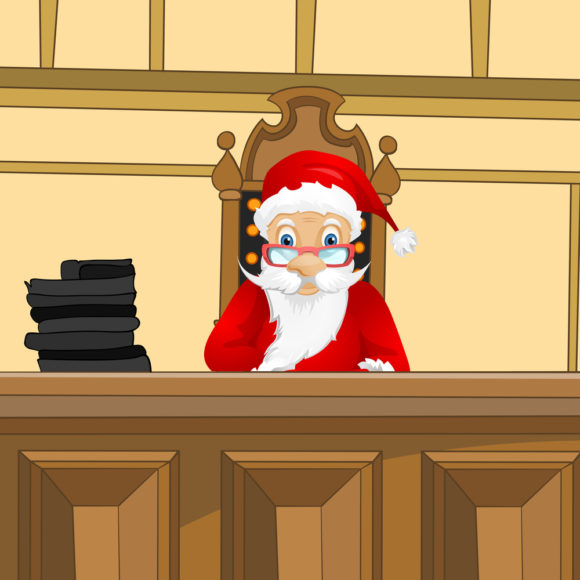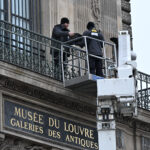Christmas is right around the corner, meaning that the time has come for the usual passel of lawsuits and threats of lawsuits, of bitter division over words and symbols — in short, of all the usual trimmings of the season.
Let’s do a quick roundup.
In New York City, on the Upper East Side, a lawyer has filed suit against a wealthy neighbor for playing Christmas music too loud outside her townhouse. The music apparently runs from 7 a.m. until midnight, and the plaintiff says he is not against Christmas music as such — he just wants a break from his neighbor’s loudspeakers.
In Texas, a nurse’s aide at a public school is in trouble for putting up a homemade poster with a picture of Linus and a quotation from the half-century-old television classic “A Charlie Brown Christmas.” The problem is that the quotation is from the scene in which Linus explains to Charlie Brown the true meaning of the holiday: Christmas, he says, is really about Jesus — and he explains by reciting the famous lines from the second chapter of the Gospel of Luke.
Meanwhile, in Knightstown, Indiana (population 2,182), the town council has bowed to a threat of a lawsuit from the American Civil Liberties Union and removed the traditional cross from atop its Christmas tree. The council was advised that it was unlikely to prevail, and in any case was not sure the town could afford the cost of the litigation. But many of the townspeople are wounded and angry.
Before we get to how to resolve all this — and I will admit I am not sure I have all the answers — let me take a moment and explain how I teach similar material in my law and religion seminar.
It’s important to understand that Christmas as celebrated in the U.S. did not begin as a religious holiday. It was, in the words of historian Stephen Nissenbaum, an “invented tradition.” In his marvelous book “The Battle for Christmas” (which I always assign), Nissenbaum reminds us that Christmas in the 18th and 19th centuries began as something raucous, an atmosphere of carnival and misrule. People misbehaved, openly and ostentatiously. The churches wanted nothing to do with it. Many just as openly and just as ostentatiously locked their doors when Christmas rolled around. Earlier, the Puritans tried to ban it. But the forces of commerce and domesticity were too great to resist. Children wanted presents, and grownups wanted to relax and celebrate. And so, gradually, the churches gave in.
I go through all of this with my students because I want them to understand that our current struggles over the holiday should not be viewed as the inevitable waning of the sacred and the triumph of the secular. It’s more accurate to say that the secularization of Christmas that so many claim to hate represents a return to the old days — a triumph, one might say, for the forces of reaction. Another way of putting the point is that the Christian Christmas, like an overloaded tree, cannot bear the weight of everything that is hung upon it. The holiday has grown too large, too central for the culture. When we develop our often-complex network of legal rules to govern the manner of celebrations both public and private, we wade deeper and deeper into what is not so much a controversy as a cultural evolution.
That’s why I tell my students that it would be nice if we could work out most of these matters without resorting to litigation. The battle is not really legal or political at all. It is epistemic and perhaps even teleological. Such fights should lead to compromise, but they hardly ever do.
So let’s get back to the cases.
First, the New York neighbor whose music is too loud. I have as healthy a respect for religious freedom as one is likely to find on a law school faculty these days, but noise ordinances, like other reasonable time, place and manner restrictions, ought to apply. (Had we a defendant who claimed that being loud is a central tenet of her faith, we might have a tougher case. But that does not seem to be what the Upper East Side is facing.)
Second, as to the nurse’s aide in Texas, I am skeptical that a single poster on a single wall in a public school should count as a government endorsement of religion. Of course this depends a bit on whether and how the school generally allows its employees to express themselves. And one might well argue that prudence would have dictated not putting up the poster in the first place. But it has always seemed to me an error to suppose that the establishment clause bans public employees, even schoolteachers, from ever letting their students know what they themselves believe. Unless the school becomes dominated by religious messages, I would say de minimis non curat lex.
As to Knightstown — sorry, folks, but the ACLU is right on the law. There are a lot of ways to secularize a Christmas display, but a cross is not one of them. Notice that here we are speaking not of the volitional act of a single teacher but of the formal act of the government itself. That fact makes an enormous constitutional difference.
Having said that, it’s worth noting that the good people of Knightstown have responded to the town council’s decision by posting crosses on private property all over the town. This seems to me an appropriate response for those who are upset. As I wrote about a similar case last year, one risk of suing to stop a single governmental display is that after you win you find yourself surrounded by dozens or hundreds of private displays instead. Whether the trade-off is worth it is not a legal question.
So, as I said, we’re having a typical Christmas season. Lawsuits everywhere. Maybe that’s inevitable. But it’s too bad we have to fight the same battles every year. Because, as Linus might say, that isn’t what Christmas is supposed to be about.
This column does not necessarily reflect the opinion of the editorial board or Bloomberg LP and its owners.
Topics Lawsuits
Was this article valuable?
Here are more articles you may enjoy.



 Board Calls for US Steel to Address Safety Issues as It Rebuilds Site of Fatal Explosion
Board Calls for US Steel to Address Safety Issues as It Rebuilds Site of Fatal Explosion  Verisk Pulls Plug on $2.4 Billion AccuLynx Deal After FTC Review Delay
Verisk Pulls Plug on $2.4 Billion AccuLynx Deal After FTC Review Delay  Louvre Tightens Security After $102M Jewel Heist, Installs Bars on Infamous Window
Louvre Tightens Security After $102M Jewel Heist, Installs Bars on Infamous Window  Former CEO of Nonprofit P/C Statistical Agent Sentenced for Stealing Millions
Former CEO of Nonprofit P/C Statistical Agent Sentenced for Stealing Millions 

